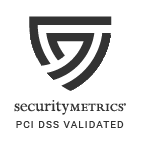Your data is vital to you, and it should be. A lot of the time, it’s priceless and irreplaceable. As a result, it should be saved as such. There are three terms here that are important when dealing with data. They are as follows: backup, archival, and sync. And today you will discover the key distinctions.
Backup
A backup is a working copy of your files that can be recovered in the event of a disaster. A snapshot of your system with multiple versions to cover file changes and corruption resistance. When you delete a file from a backup, it is typically retained in the backup for 30 days (though this can vary depending on the settings), after which the file is deleted from the backup to keep it clean of unneeded files for restoration. Use cases: If you accidentally delete a file and recognize it promptly, you can restore it from backup, or if your computer crashes, you can restore the entire system from backup. Sample Programs: Cloudberry, Duplicati, Duplicacy, Veeam, Macrium, Time Machine
Archive
This is exactly what it sounds like. It keeps files for extended periods of time. Unlike backups, which are typically designed for quick restoration, high efficiency, and space savings, archival stores all versions of your files until you explicitly delete them from the archive. Archival is typically much more expensive than backup and is limited only by your budget. Use cases: A photographer needs to save all their photos for reference at a later point. Or a company needs to save files for compliance purposes. Sample Programs: Cloudberry, Duplicati, Duplicacy, Veeam, Macrium, Time Machine
Sync
Sync is frequently confused with backups, but they are not the same thing. Dropbox, Google, Microsoft, and Apple all provide various “backup” options that aren’t actually backups in the true sense. They “back up” your data by copying it to their servers, but lack the same safeguards as true backup programs. These copies may allow you to recover some or all of your system, but there is a greater chance that something will be missed. There’s also the possibility that if your system is infected with ransomware, your synced files will be encrypted as well. It may be adequate, but for added security, you may want to consider additional backups/archives. Use cases: Cheap and easy option to offer some level of protection. Sample Programs: Google File Stream, Dropbox, OneDrive
Which option is best for you?
This depends on your needs. Are you looking for something that’s cheap? Do you need the most protection possible?
The cheapest route is utilizing sync programs such as OneDrive or Google Drive, which most people already have. It will be better than nothing, but more often than not it’s not enough to have just that.
The middle ground route is to utilize at least two methods mentioned above, Ideally Backup/Archive.
The best option is to use the 3 2 1 rule. 3 Copies, 2 offsite,1 onsite*. Put your data in as many secure locations as you can afford and manage. This way if any one point fails, you never lose a moment’s rest.
*I didn’t mention anything about onsite backups since this article wasn’t about general backup safety, but rather the terminology, for reference this could be as simple as backing up to a local hard drive in conjunction with another source mentioned here.


